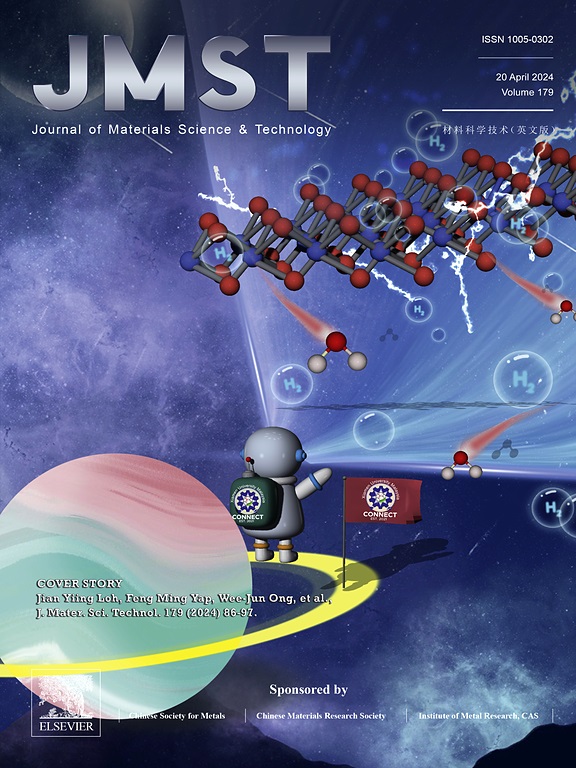Synergistic effect of morphology regulation of LaNiO3 S-scheme heterojunction for enhanced photocatalytic hydrogen production
IF 11.2
1区 材料科学
Q1 MATERIALS SCIENCE, MULTIDISCIPLINARY
引用次数: 0
Abstract
Constructing unique structures and optimizing the morphology of catalysts are effective strategies to enhance photocatalytic hydrogen evolution activity. In this study, LaNiO3 with diverse morphologies was synthesized through the addition of surfactants and subsequently coupled with ZnCdS for the first time to construct an S-scheme heterojunction. This significantly improved its photocatalytic hydrogen evolution performance. Notably, rod-shaped LaNiO3 demonstrated superior hydrogen evolution performance, which can be attributed to its higher loading capacity, effective suppression of catalyst aggregation, and exposure of more active sites for hydrogen evolution, thus enhancing the overall activity of the photocatalytic reaction. Rod-shaped LaNiO3 demonstrated superior hydrogen evolution performance, which can be attributed to its higher loading capacity, effective suppression of catalyst aggregation, and exposure to more active sites. The findings indicate that the composite catalyst 15 % rod-shaped LaNiO3 achieved a hydrogen production rate of 52091 μmol/(g h) in five hours and exhibited an apparent quantum efficiency of 11.16 % at a wavelength of 420 nm. The experimental findings, along with theoretical computations, have validated the formation of a well-regulated topography and S-scheme heterojunction while elucidating the underlying charge transfer mechanism. This study offers valuable perspectives on the morphological regulation of photocatalysts and the logical construction of heterojunctions, providing important theoretical significance and practical value.

LaNiO3 s型异质结形态调控对光催化制氢的协同效应
构建独特的结构和优化催化剂的形态是提高光催化析氢活性的有效策略。在本研究中,通过添加表面活性剂合成了具有多种形态的LaNiO3,并首次与ZnCdS偶联,构建了S-scheme异质结。这显著提高了其光催化析氢性能。值得注意的是,棒状LaNiO3表现出优异的析氢性能,这主要归功于其更高的负载能力,有效抑制催化剂聚集,暴露出更多析氢活性位点,从而提高了光催化反应的整体活性。棒状LaNiO3表现出优异的析氢性能,这可归因于其更高的负载能力,有效抑制催化剂聚集,并暴露于更多的活性位点。结果表明,15%棒状LaNiO3复合催化剂在5h内的产氢速率为52091 μmol/(g h),在420 nm波长处的表观量子效率为11.16%。实验结果与理论计算一起,验证了良好调节的形貌和s型异质结的形成,同时阐明了潜在的电荷转移机制。本研究为光催化剂的形态调控和异质结的逻辑构建提供了有价值的视角,具有重要的理论意义和实用价值。
本文章由计算机程序翻译,如有差异,请以英文原文为准。
求助全文
约1分钟内获得全文
求助全文
来源期刊

Journal of Materials Science & Technology
工程技术-材料科学:综合
CiteScore
20.00
自引率
11.00%
发文量
995
审稿时长
13 days
期刊介绍:
Journal of Materials Science & Technology strives to promote global collaboration in the field of materials science and technology. It primarily publishes original research papers, invited review articles, letters, research notes, and summaries of scientific achievements. The journal covers a wide range of materials science and technology topics, including metallic materials, inorganic nonmetallic materials, and composite materials.
 求助内容:
求助内容: 应助结果提醒方式:
应助结果提醒方式:


